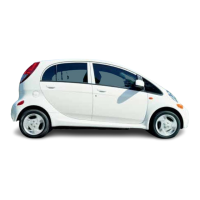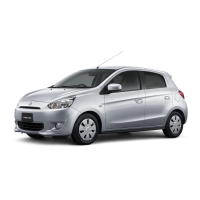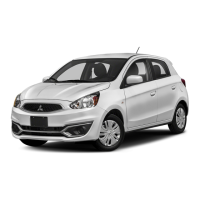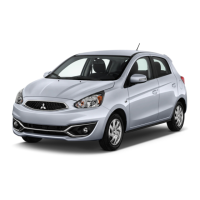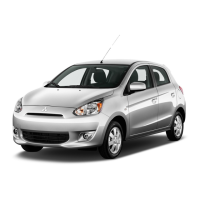Chapter 10 Suspension and steering systems IO-7
4.6b On 1984 and earlier models, the strut bar
dimension ‘A’ is measured as shown
4.6~
Measure the face of the nut to the end of the strut
to get dimension ‘A’ on 1985 and later models
5.2 Torsion bar components
1 Dust cover
2 Anchor arm mounting nut
3 Anchor arm assembly
4 Torsion bar
5 Torsion bar (4WD models) - removal,
installation and adjustment
Refer to illustrations‘5.2, 5.3, 5.8 and 5.10
Warning: Wheneveranyofthesuspensionorsteeringfast~nersareloos-
ened or removed, they must be inspected and, if necessary, replaced with
newonesofthesamepartnumberoroforiginalequipmentqualityandde-
sign. Torque specifications must be followed for proper reassembly and
component retention.
Removal
1 Loosen thewheel lug nuts, raise the front of the vehicle and support it
securely on jackstands, then remove the wheel and the brake caliper as-
sembly (see Chapter 9).
2 Remove the anchor arm dust covers (see illustration).
3 Mark the torsion bar directly opposite the mark on the anchor arm
(see illustration). Caution: Do notpunch orscratch the torsion bar-use
paint to make the mark.
4 Loosen the jam nut and adjusting nut at the anchor arm assembly until
the torsion bar can be slipped out of the anchor arms.
Installation andadjustment
5 When reinstalling the torsion bar, apply grease to the torsion bar and
anchor arm splines, the adjusting bolt thread&and the inside of the dust
boots.
5.3 Mark the torsion bar before removing it, but DO
NOT scratch it or make a mark with a centerpunch
6
If both bars have been removed, the right torsion bar can be distin-
guished from the left by checking the end of the bar. Look for an L or an R
stamped into the end of each bar (R is right, L is left).
7 Position the marked end of the bar into the anchor arm with the mating
marks aligned (if a new bar is installed, align the white spline with the mark
on the anchor arm).

